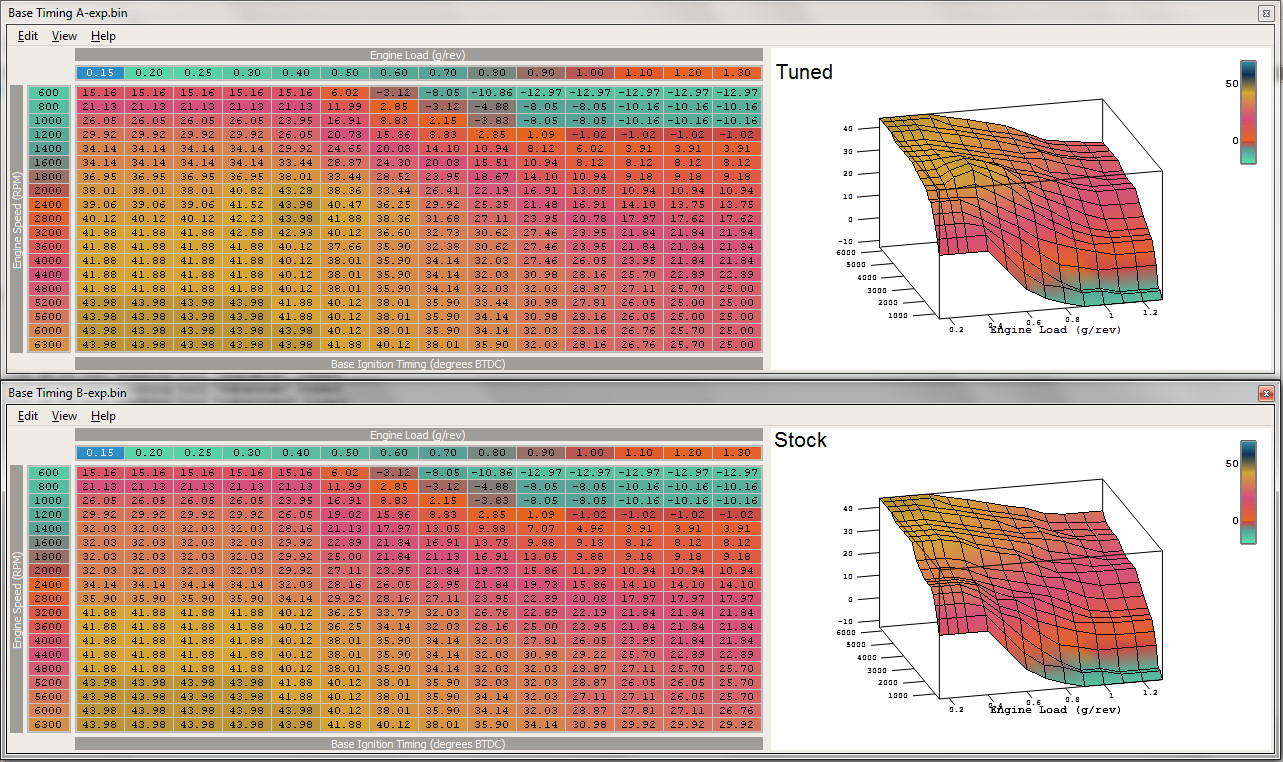I'm used to seeing naturally aspirated cars run rich. by rich I mean around 12.5 parts air vs fuel ratio at any given RPM almost. So i'm wondering for the engine I built, is the following table suitable?
Engine is a street flat 4, 4 valve, high tumble/swirl NA with 10:1 static and 8.5:1 dynamic compression ratio on midgrade gasoline. Peak power is at 6200 RPM and peak torque at 3800-4600 RPM.

x-axis is engine load vs y-axis being engine RPM.
My observations running the engine with this fuel table is:
- NO knocking or detonation on midgrade gas
- allows near MBT ignition timing advance
- good fuel consumption
- good emissions
- moderate EGT
- going richer in the midrange area induces knocking/pinging.
Engine is a street flat 4, 4 valve, high tumble/swirl NA with 10:1 static and 8.5:1 dynamic compression ratio on midgrade gasoline. Peak power is at 6200 RPM and peak torque at 3800-4600 RPM.

x-axis is engine load vs y-axis being engine RPM.
My observations running the engine with this fuel table is:
- NO knocking or detonation on midgrade gas
- allows near MBT ignition timing advance
- good fuel consumption
- good emissions
- moderate EGT
- going richer in the midrange area induces knocking/pinging.



